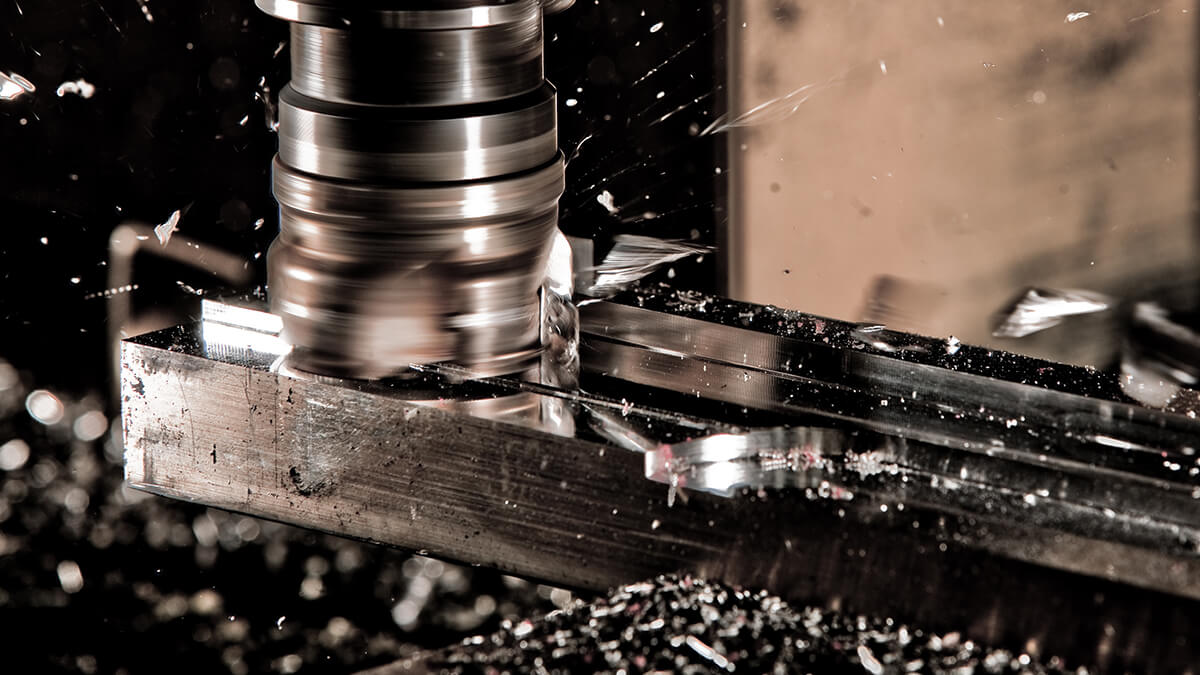The operating principle of the lathe machine is to use the spindle rotation and the movement of the bed to turn the material into the required work piece.
A lathe is a kind of machine tool, which fixes the work piece on the main shaft and rotates at high speed to process the cutting tool in feed motion. A lathe is a machine tool that is driven by an electric motor to rotate the spindle through a belt and gear transmission system, which drives the work piece on the spindle chuck to rotate, and then uses the turning tool fixed on the tool post to perform turning. The main work piece is round rods. The cutting work includes turning end face, inner and outer diameter, arc, taper, drilling, boring, eccentricity, embossing, cutting, grooving, turning thread.
-
Head stock
Including main shaft, main shaft gear transmission mechanism, and external gear train. Spindle: Install the chuck to clamp the work piece; Spindle gear transmission mechanism: Drive the spindle to rotate and change the speed; External gear train: Drive the feed for automatic feed and thread turning.
-
Bed
It is made of cast iron to support the spindle head, tool slide, and tailstock. The slide rail on the bed table is composed of a flat rail and a V rail, providing precise sliding of the tool slide seat and the tail seat.
-
Tool-Carriage Assembly
Saddle:
- The tool holder can hold different types of turning tools and gauge holders.
- The compound tool holder has a longitudinal feed mechanism and can be rotated to adjust the angle for turning taper and angle.
- The lateral feed hand wheel is an important mechanism for controlling the outer diameter.
Apron:
- The longitudinal feed hand wheel is used for the front and back movement of the tool slide and the control of the length during rough turning.
- The horizontal and vertical automatic feed mechanism cooperates with the transmission of the external gear train of the lathe, which can automatically turn at different feed rates.
- The thread cutting mechanism is adjusted by the external gear train, and the thread turning indicator can be used to turn the thread of the required pitch.
-
Automatic feed and thread cutting mechanism
The main shaft power is transmitted to the external gear train, which drives the rotation of the lead screw to achieve the functions of automatic feeding and thread turning.
-
Tail Stock
It is used to install drill clamps or taper shank drills for drilling center holes, drilling, tapping, and reaming. Used to install the top center.
Other accessories of the lathe:
- Lathe Chuck: The chuck is a mechanical device used to clamp the work piece on the machine tool.
- Lathe Face plate: The face plate, also known as the face plate, is a basic fixture accessory of a lathe, used for wood or metal turning lathes. It is a round metal (usually cast iron) plate. There are many radial or irregular parallel slender grooves on the face plate, which are used for boring and drilling of larger or irregularly shaped work objects, and work objects that cannot be clamped by other methods.
- Lathe Finger: It is used in the hole of the processed work object. Both ends of the spindle are provided with center holes so that one end is supported by the center and the other end enters the spindle end.
- Lathe Center: The top center is used to support the work. It is installed on the spindle end and called the live top center, also known as the front center, and installed on the tail stock, is called the dead center or the rear center.
- Lathe Driven Disc: The drive disc is installed on the main shaft of the lathe. When it rotates, it rotates the work clamped between the two top centers for turning.
- Lathe Collect Chuck: The collet is a kind of part, which is mainly responsible for clamping the small-diameter work object to the spindle end. Mainly used for hexagonal lathes and automatic lathes.
- Lathe Steady Rest: It is stable support that is used to support the slender work object, which is installed on the tool holder and moves with it, to avoid the deflection of the work object.
- Lathe Angle Plate: an auxiliary tool used for work objects that cannot be directly installed on the faceplate.
- Lathe V slot block (V clamp block): used to determine the center position of the work object.
- Lathe Turning Tool: Used for processing, the appearance of work objects.
What is CNC lathe processing?
CNC lathe processing is mainly based on round work pieces, such as rings, bars, etc. CNC lathe processing, which has not been invented in recent years, is gradually evolved from lathe processing. Among them, NC stands for "Numerical Control", which uses numerical values and symbols to control machine movements; CNC stands for "Computer Numerical Control", which uses computer memory and input and output signals to control machine movements; and CNC lathe processing is a lathe processing technology controlled by computer numerical values. The CNC lathe processing controller is used to communicate with the computer and the lathe host to achieve precise and large-scale lathe processing and to avoid human ability.
Brief introduction of CNC lathe processing products:
CNC lathe processing is a part of the precision machining of CNC lathe processing machinery. It is a processing form controlled by a computer system: one is to fix the turning tool and process the unshaped work piece in rotation, and the other is to fix the work piece and pass the work piece High-speed rotation, the horizontal and vertical movement of the turning tool (tool holder) for precision machining. Drills, reamers, reamers, taps, dies and knurling tools can also be used on the lathe for corresponding processing. CNC lathe processing is mainly used for processing shafts, discs, sleeves, and other work pieces with rotating surfaces. It is the most widely used type of machine tool processing in machinery manufacturing plants.
CNC lathe processing product use:
CNC lathe processing is aimed at some basic parts processing. The processed products are mainly used in communication fasteners, computer fasteners, home appliance fasteners, electrical fasteners, building materials joints, mobile phone fasteners, mobile phones, laptop computers, various plastic shells, Communications, micro motors, computers, electrical appliances, electronics, toys, watches, lighting, locomotives.
Types of lathe processing equipment:
-
Ordinary lathe or mechanical lathe (Engine Lathe)
It is a general-purpose machine tool and is the predecessor of today's high-speed lathe. It has the complete functions of the lathe. As long as the operator is skilled in the technology, the work piece with low precision can be completed and the price is very low.
-
Automatic Lathe (Automatic Lathe)
The automatic sequence control, feeder, and discharging mechanism not only have very high processing efficiency but also can operate unmanned for a long time, suitable for small parts.
-
Vertical Lathe (Vertical Lathe)
The head of the lathe is placed vertically, it is convenient to load and unload the work piece, and the trouble of chip accumulation and deformation is reduced. In recent years, a highly automated inverted lathe has even been developed.
-
Bench Lathe
Lathe processing equipment that can be used on the table is suitable for processing small parts such as measuring tools, instruments, and watches.
-
Tool room Lathe
The structure is similar to that of ordinary lathes, except that there is additional equipment such as center frame, tool holder, collet and taper accessories, so it can produce precision products such as tools, mold parts, and gauges.
-
CNC lathe processing equipment (Computerized Numerical Control Lathe)
In the early numerical control NC lathe processing equipment, the data needs to be punched into the hole belt, and then the control unit converts the above-mentioned data into signals to promote automatic turning processing. CNC lathe processing equipment, through the personnel input data into the computer to generate G code, and then the CNC controller drives the machine for precision processing.
CNC lathe processing equipment, safety precautions:
- When a beginner is operating CNC lathe processing equipment, to avoid danger, the rapid feed rate should be adjusted to about 0-25%.
- Two people cannot operate a machine at the same time.
- Before executing the program, please make sure that the cursor position of the program is at the starting point.
- After the program is input to the CNC lathe, please check the correctness of the program again.
- Before performing processing, the work piece must be clamped.
- Choose the appropriate tool, cutting speed and feed rate.
- If the work piece is eccentric or has a large diameter, reduce the maximum speed and peripheral speed to avoid danger.
Brief introduction of CNC lathe processing equipment structure:
- Spindle box: The main structure includes a housing, high-speed precision angular roller bearings, V-belt pulleys, variable speed gear sets, etc. The function is to support the spindle, drive the clamping work piece to rotate or clamp the tool.
- Base: To bear the weight and cutting vibration of the entire CNC lathe processing equipment, the inside is used as a cutting fluid storage tank, and there are bolts for adjusting the level of the machine for installation.
- Bed rails: CNC lathe processing equipment has two-bed rails, usually X and Z axis bed rails are perpendicular to each other, the X-axis controls the diameter of the work piece, and Z-axis controls the length of the work piece.
- Tool device system: CNC lathe processing equipment tool, there are many types of clamping turret, there are traditional types such as four knives, six knives, eight knives, and twelve knives.
- Bedpost
- Bed
Due to the development of industry, the actual work needs are increasing. In order to adapt to the trend of various processed products and modern automated processing, to meet the needs of production, a variety of lathe structures and different functions and characteristics have been developed.






.png)







